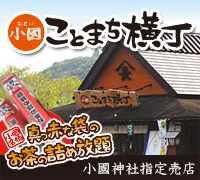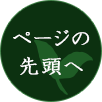

- 2023/05/02
- ヤマチョウ新茶の代名詞 八十八夜新茶が登場です。
- 2023/05/01
- 特上浅蒸し煎茶が新茶で出来上がりました。
- 2023/05/01
- 神饌茶が新茶でできあがりました
- 2023/05/01
- 【新茶】森のやわらぎが新茶で出来上がりました
- 2023/04/29
- 極上粉茶が新茶で出来上がりました。
- 2023/04/29
- 御林のあさつゆが新茶で出来上がりました。
- 2023/04/24
- ヤマチョウの一番人気・森の雫が新茶になりました。
- 2023/04/19
- 通好み!森の雅が新茶になりました。
- 2023/04/15
- 50gのパッケージがかわいすぎ!森の華が新茶になりました。
- 2023/04/14
- 2023年 森の茶の初取引が行われました
- 鈴木長十商店 ホーム
- 静岡茶を知る



日本茶伝来
お茶の発祥地は現在の中国雲南省あたりの山地と言われています。
昔の書物には「お茶を飲めば力が出て気分がよくなる」との記述もあり、貴重な医薬品だったのかもしれません。
日本人とお茶の出会いは奈良時代。
空海や最澄などが唐(中国)に留学した際にお茶の木を持ち帰ったのがきっかけです。
Origin of Japanese tea
The origin of tea is believed to be in the mountains around present-day Yunnan Province, China.
It may have been a valuable medicine, as some old books state that "drinking tea gives you strength and improves your mood”.
Japanese people first encountered tea in the Nara period (710-794).
Kukai, Saicho, and others brought back tea trees when they studied in Tang (China).


次にお茶の記述があるのは鎌倉時代。
栄(中国)に留学していた高僧たちがお茶の木を持ち帰り各地に種を蒔いたとされています。
静岡茶のルーツ
静岡茶のルーツはそこから約40年後。
宋(中国)に渡った高僧・聖一国師がお茶の種を持ち帰り、今の静岡市足久保に種を蒔いたのが始まりです。
南北朝時代の書物に「闘茶」という各地のお茶を当て合う行事の記述があります。
それには駿河のお茶はとても優れているとあり静岡茶の発展の様子と品質の高さが伺えます。
Roots of Shizuoka Tea
The roots of Shizuoka tea can be traced back about 40 years later.
When the high priest Seiichi Kokushi brought back tea seeds from the Song Dynasty (China) and planted them in Ashikubo, Shizuoka City.
In a book written in the Nanbokucho Period, there is a description of an event called "Tocha (fighting tea)" in which people guessed each other's tea from different regions.
It says that the tea from Suruga is very good, which shows the development of Shizuoka tea and its high quality.


公家が広げた静岡茶
戦国時代に静岡茶は更なる発展を遂げます。
静岡を支配していた今川氏のもとにやってきた公家たちにより、茶の湯や茶菓子の風習が華やかに繰り広げられるのです
静岡で本格的にお茶が栽培されるようになったのもこの頃です。
Shizuoka tea spread by court nobles
During the Warring States period, Shizuoka tea further developed.
The tea ceremony and the custom of tea cakes were developed by the court nobles who came under the Imagawa clan, which ruled Shizuoka.
It was also around this time that tea began to be cultivated in Shizuoka earnestly.
昔のお茶はとても高価だったので身分の高い人しか飲めなかったんだよ。
Tea used to be so expensive that only people of high status could drink it.

徳川家康が命じた静岡茶栽培
江戸時代になると、徳川家康が静岡市の一部を支配していた武士にお茶を作るよう命じました。
これは今のような静岡茶ではなく抹茶の基となる「碾茶-てんちゃ-」というものでした。
この碾茶を高価な茶壷に詰め家康のいる駿府へと運ばせたのです。
この茶壷は名品ばかりで、後に徳川御三家の家宝となっています。現在も当時を偲び、秋になると「お茶壷道中」というイベントがにぎやかに行われています。
Tokugawa Ieyasu Orders Shizuoka Tea Cultivation
In the Edo period, Tokugawa Ieyasu ordered the warriors who ruled parts of Shizuoka City to produce tea.
The tea was not Shizuoka tea as we know it today, but "Tencha," the base of powdered green tea.
The tea was packed in expensive tea jars and transported to Sunpu, where Ieyasu was located.
These tea jars were all masterpieces and later became heirlooms of the three Tokugawa families. Even today, an event called "Tea Jar Road Trip" is held in autumn to commemorate those days.

牧之原開拓
幕末に駿府に移住した徳川慶喜と旧家臣たちは、牧之原を開拓して茶園を造成する計画を立てました。
これは新時代の貿易品としてお茶が注目されていたからです。
良質な静岡茶を大量に収穫するために一大プロジェクトを起動させたのです。
そして安政5年。日米友好通商条約が結ばれ各地で大々的に貿易がスタートしました。
静岡でもアメリカ向けに静岡茶などの高級煎茶を盛んにつくり輸出したのです。
Makinohara Development
After moving to Sunpu at the end of the Edo period, Tokugawa Yoshinobu and his former vassals made plans to cultivate Makinohara and cultivate a tea plantation.
It was because tea was attracting attention as a tradable commodity in the new era.
They launched a major project to harvest large quantities of high-quality Shizuoka tea.
Then came the 5th year of Ansei. The Japan-U.S. Friendship and Commerce Treaty was signed and trade started on a large scale in various regions.
Shizuoka also produced and exported to the U.S. high quality tea such as Shizuoka tea.
当時のアメリカではお茶に砂糖やミルクを入れて飲んでいたんだって。
Back then in the U.S., they used to add sugar and milk to tea and drink it.

日本一の生産地に
静岡茶に限らず全てのお茶に共通しますが、摘みとった葉を仕上げるのは農家の仕事でした。
ですが貿易が盛んになった影響で新茶の季節は忙しくて仕上げにまで手が回らなくなってしまったのです。
その為、製茶工程を担当する茶師という人たちが出てきました。
結果、農家がお茶を摘みとり茶師が仕上げるという現在のような分担が出来上がってきたのです。
静岡は生産量、生産技術、品質と共に揃った日本一の生産地へと発展していきました。
Japan's largest production area
In common with all teas, not just Shizuoka tea, it was the farmer's job to finish the plucked leaves. However, with the rise of trade, farmers became too busy during the new tea season to finish the tea leaves. As a result, a group of people called "tea masters" was created to take in charge of the tea making process.
The result was the current division of labor, with farmers picking the tea and tea masters finishing it. Shizuoka has developed into Japan's top tea-producing region in terms of production volume, production technology, and quality.
明治末、静岡でやぶきた茶が発見されたよ。樹勢、品質共に素晴しかったから、昭和28年には農林省(当時)の奨励品種にも指定されたんだ。
Yabukita tea was discovered in Shizuoka at the end of the Meiji period (1868-1912). Because of its excellent vigor and quality, it was designated as a variety to be promoted by the then Ministry of Agriculture and Forestry in 1953.


静岡県が日本一の茶生産地に発展した理由の一つは温暖な気候です。元々亜熱帯性植物であるお茶の木は寒さに強くはありません。
その為、真冬でも雪の降ることの少ない静岡県はとてもお茶の栽培に適した土地なのです。
更に牧之原台地、富士山麓、安倍川、大井川、天竜川、太田川などの地域は特に豊かな地形環境にも恵まれ、それぞれに特徴のあるお茶が生産され産地銘茶を確定しています。
また、静岡茶の特徴を語る上で大切なのは深蒸し茶であるということです。
昔から「荒茶の性格は蒸しで決まる」と言われている程大切な蒸し方。大きく分けて普通蒸し・浅蒸し・深蒸しの3種類に分けられます。
静岡茶は、そのほとんどが深むし茶です。
深むし茶は他の蒸しに比べて形が短くつぶれており、粉も多くなります。普通蒸しを見慣れた人には、粉っぽく下級茶のように見えてしまうかもしれません。ですが、この細かい茶葉こそ、静岡茶の持つうま味とコクの基となっているのです。
もう一つの特徴は「やぶきた茶」です。
甘みのある濃厚な渋みと優雅が香気が特徴のこのお茶、発見されたのは明治末期の静岡県なんです。
優れた特性をもったやぶきた茶は爆発的に普及し、もはや日本茶の代名詞的存在となっています。
One of the reasons Shizuoka has developed into Japan's number one tea-producing region is its mild climate. Originally a subtropical plant, the tea tree is not resistant to cold.
Therefore, Shizuoka Prefecture, where it rarely snows even in the middle of winter, is a very suitable place for tea cultivation.
Furthermore, the Makinohara Plateau, the foot of Mt. Fuji, the Abe River, the Oigawa River, the Tenryu River, and the Ota River are blessed with particularly rich topographical environments, each of which produces tea with its own unique characteristics and produces famous teas in its region.
Another important characteristic of Shizuoka tea is that it is a deep steamed tea.
The steaming method is so important that it has long been said that "the character of rough tea is determined by steaming. There are three main types of steaming: normal steaming, light steaming, and deep steaming.
Most Shizuoka teas are deep steamed.
Compared to other steamed teas, deep steamed tea is shorter in shape, crushed, and has more powder. For those who are used to seeing regular steamed tea, it may look like a powdery, lower grade tea. However, these fine tea leaves are the basis of the umami and richness of Shizuoka tea.
Another characteristic of Yabukita-tea is its sweet, rich astringency and elegant aroma.
This type was discovered in Shizuoka Prefecture at the end of the Meiji period (1868-1912).
With its excellent characteristics, Yabukita-tea has exploded in popularity and has become synonymous with Japanese tea.


- 新潟県村上茶
- 村上地方を中心に栽培されているお茶。渋みが少なく深いうま味が特徴。
村上地方は新潟県の最北端に位置しており、集団的に栽培されている茶産地の北限となる。
- Murakami-tea in Niigata
- Green tea grown mainly in the Murakami region. It is characterized by a deep umami taste with little astringency.
The Murakami region is located in the northernmost part of Niigata and is the northern limit of collectively grown tea production areas.
- 埼玉県狭山茶
- 関東エリアの銘茶の産地として有名。埼玉県は寒いところなので、静岡や九州と違いお茶の葉は1年に2回しか摘み取りません。
- Sayama-tea in Saitama
- It is famous for its excellent tea production in the Kanto area. Because Saitama is a cold place, tea leaves are plucked only twice a year, in contrast to Shizuoka and Kyushu.
- 静岡県静岡茶
- 日本のお茶の40%以上の生産量を誇るお茶の産地。牧之原台地、富士山麓、安倍川、天竜川、大井川などお茶の栽培に適した自然環境を活かした銘産地が並ぶ。主にやぶきたなどの煎茶や深蒸し茶の産地が主流ですが、岡部町は玉露の産地としても有名。
- Shizuoka-tea in Shizuoka
- The tea production area occupies more than 40% of Japan's total tea production. The Makinohara Plateau, the foot of Mt. Fuji, the Abe River, the Tenryu River, the Oi River, and other natural environments suitable for tea cultivation are all lined with famous tea production areas. While sencha and deep steamed teas such as Yabukita are mainly produced here, Okabe-cho is also famous for its gyokuro tea.
- 三重県伊勢茶
- 静岡、鹿児島に次いで全国第三位の生産量。
テアニン成分(うま味成分)を含むほのかな甘みが特徴のかぶせ茶は全国2位のシェアを誇ります。
- Ise-tea in Mie
- The third largest producer in Japan after Shizuoka and Kagoshima.
Kabusecha, characterized by a subtle sweetness that includes theanine (an umami component), holds the second largest share of the national market.
- 京都府宇治茶
- 京都府の宇治近郊で高級茶の産地として有名。煎茶を中心に生産しているが、玉露や碾茶、抹茶など高品位なお茶の産地として有名。
- Uji-tea in Kyoto
- Famous for high-grade tea production in the suburbs of Uji, Kyoto Prefecture. It produces mainly sencha, but is also famous for its gyokuro, tencha, matcha, and other high-grade teas.
- 福岡県八女茶
- 八女玉露の生産地として有名。
玉露の生産量は全国一位。
八女市を中心に星野村や黒木町などで生産されている玉露は全国生産量の約半分を占めています。
- Yame-tea in Fukuoka
- Famous for producing Yame Gyokuro.
The amount of gyokuro produced is the highest in Japan.
Gyokuro produced in Yame City, Hoshino Village, Kuroki Town, and other areas account for about half of the nation's total production.
- 鹿児島県鹿児島茶
- 静岡茶に次ぐ全国第二位の生産量を誇る。知覧茶、溝辺茶などの銘柄が有名。
平坦な茶園が多く栽培の効率化が進んでいる。温暖な気候を活かし新茶の摘み取りは4月上旬頃。
「日本一早い新茶」としても有名です。
- Kagoshima-tea in Kagishima
- It is the second largest producer in Japan after Shizuoka tea. Famous brands include Chiran tea and Mizobe tea.
The tea plantations are flat and efficient. Taking advantage of the mild climate, new tea leaves are picked in early April.
It is also famous as "the earliest new tea" in Japan.

Q1:
「駿河路やはなたち花も茶のにおい」香り高い花橘も駿河の茶の香りの素晴しさには敵わないと言う名句を残したのは誰?
Q2:
江戸初期、静岡の山間部で年貢として納めていたものは何?
正解 A1:松尾芭蕉 A2:お茶









